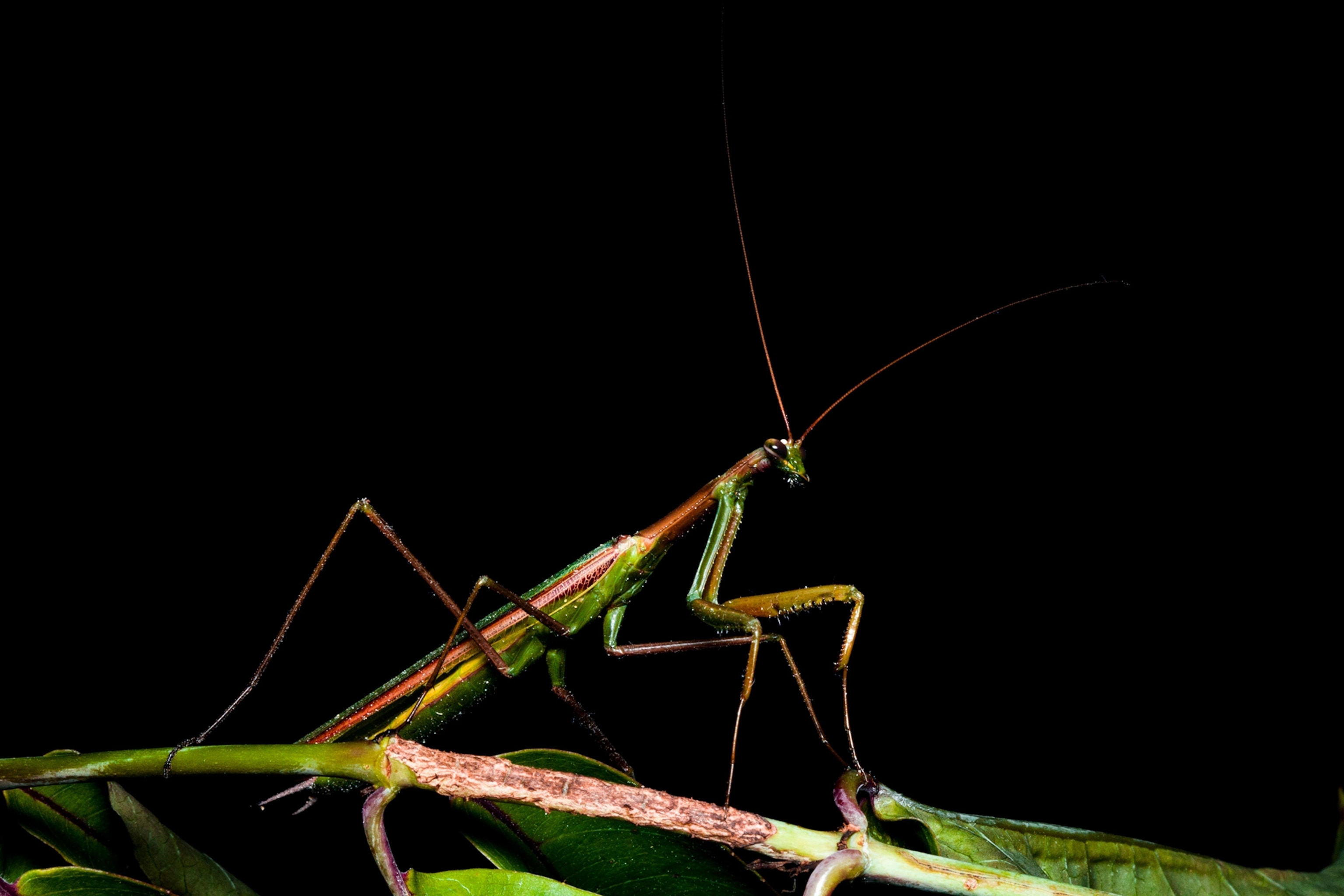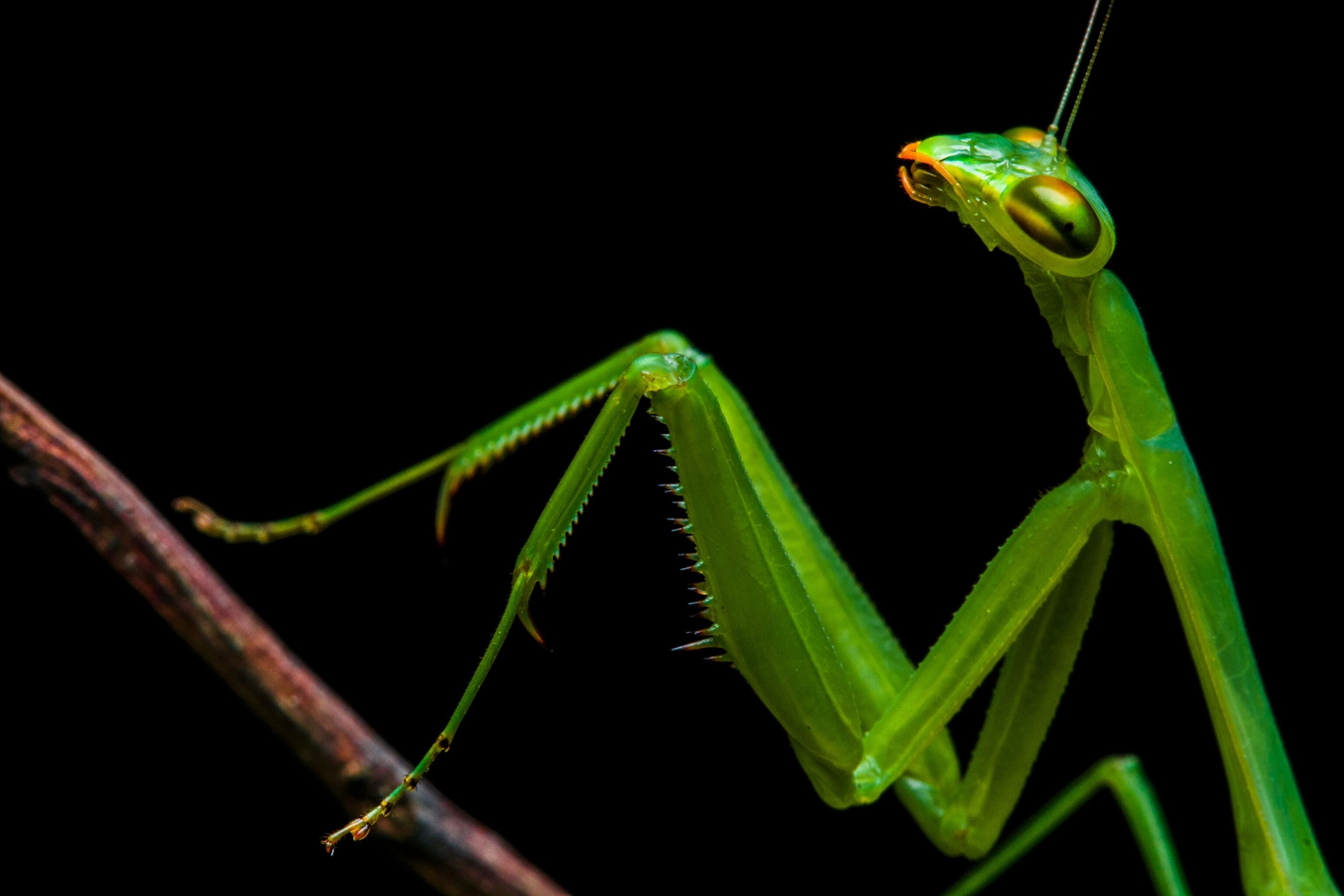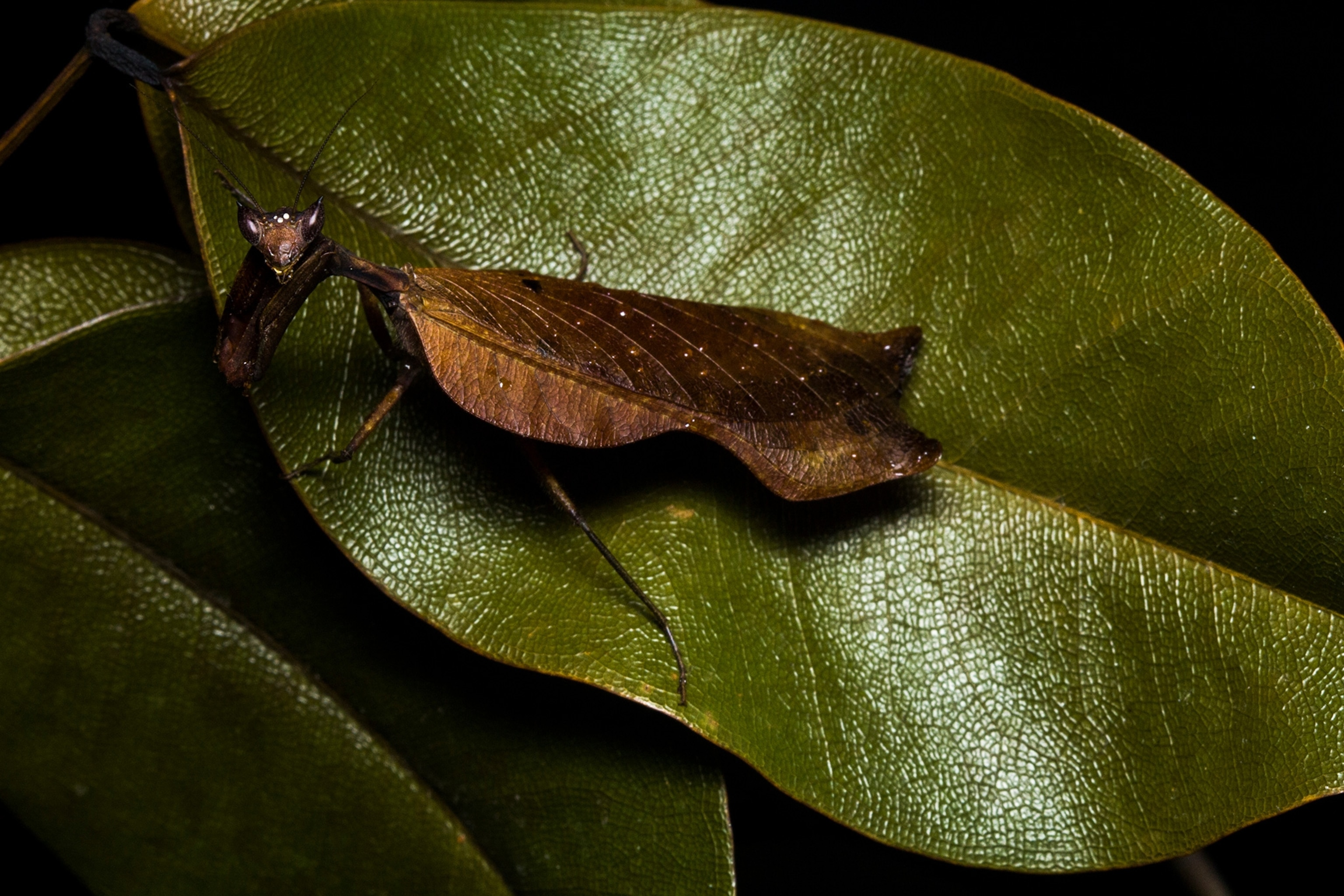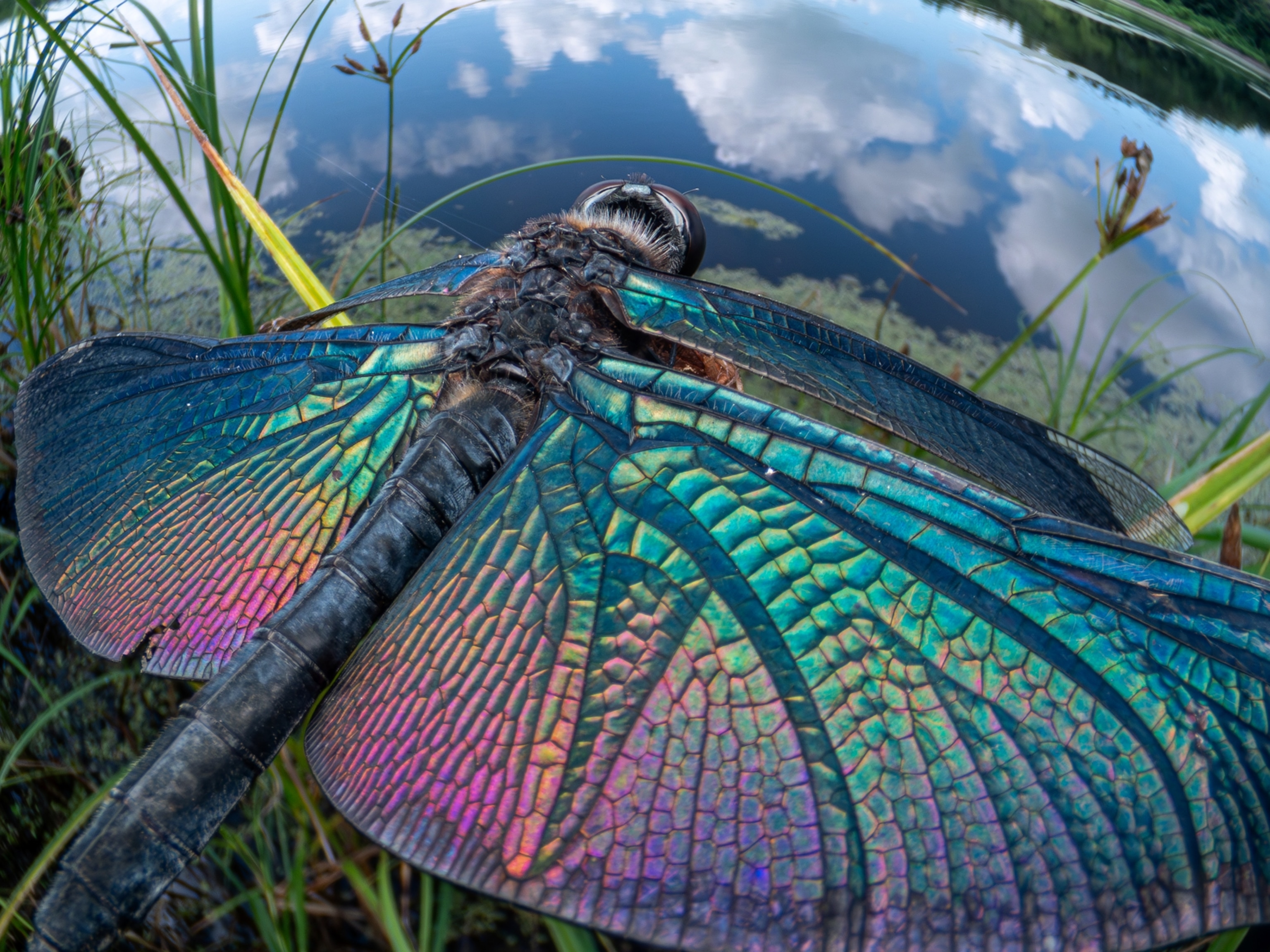
New 'unicorn' mantis species found in Brazilian rainforest
Researchers have discovered a handful of new praying mantises, some that boast incredible horn-like appendages on their heads.
In Brazil’s Atlantic Forest, a coastal woodland even more ancient than the Amazon, unicorns lurk.
The forests, which have declined by as much as 90 percent in the last century and remain underexplored, have some of the highest levels of biodiversity in the world. And that includes a vast variety of praying mantises—such as unicorn mantises.
These creatures have mysterious horn-like structures that project from their heads to look like a single spire, hence their common name. Though there are several described species, many remain unknown. (Read about a species of mantis that looks like an orchid.)

On a series of recent trips to explore this wilderness, a group of researchers with a non-profit Projeto Mantis discovered somewhere between five and seven new species of praying mantises.
The team happened upon a stunning unicorn just before Christmas 2017 in Reserva Ecológica de Guapiaçu, a park northeast of Rio de Janeiro. While light trapping, which involves luring insects at night with bright illumination, the researchers found a hand-size unicorn mantis with a prominent horn and metallic red limbs, says team leader Leonardo Lanna, whose expedition was funded by the National Geographic Society.
It was a “truly astonishing and majestic mantis,” Lanna says. While the individual is in the genus Zoolea, there's a good chance it's a new species, which the team plans to find out—but deeper investigation takes time and careful comparison with museum specimens.
In several locations near Rio, the researchers also collected a new species currently being described in a forthcoming paper led by Julio Rivera, a mantis expert at Universidad San Ignacio de Loyola in Peru. Rivera is collaborating on the study and related work with the Projeto Mantis team. (See pictures of praying mantises wearing 3-D glasses—for science.)
This creature has little nubs on its head which come together to look almost like a tiny single horn. Its genus, Vates, was previously known to occur primarily in the Amazon rainforest, and the team is currently deciding on a species name for the sizable critter.
“It’s incredible that such a large animal can stick around without even being noticed,” Rivera says.


One of the most arresting of these newfound mantises was found in a unique high-altitude grassland in a park west of Rio, its antennae “majestically swaying in the wind,” Lanna says.
This large red-and-orange insect looks similar to other mantises in the genus Coptopteryx, but those are normally found in dry lowlands in other nearby countries, so there’s a good chance this is a new species, he adds.
Lanna notes that unlike some other researchers, his group does not kill mantises to study them, either releasing live individuals, raising them in captivity, or waiting until they are dead to collect them.
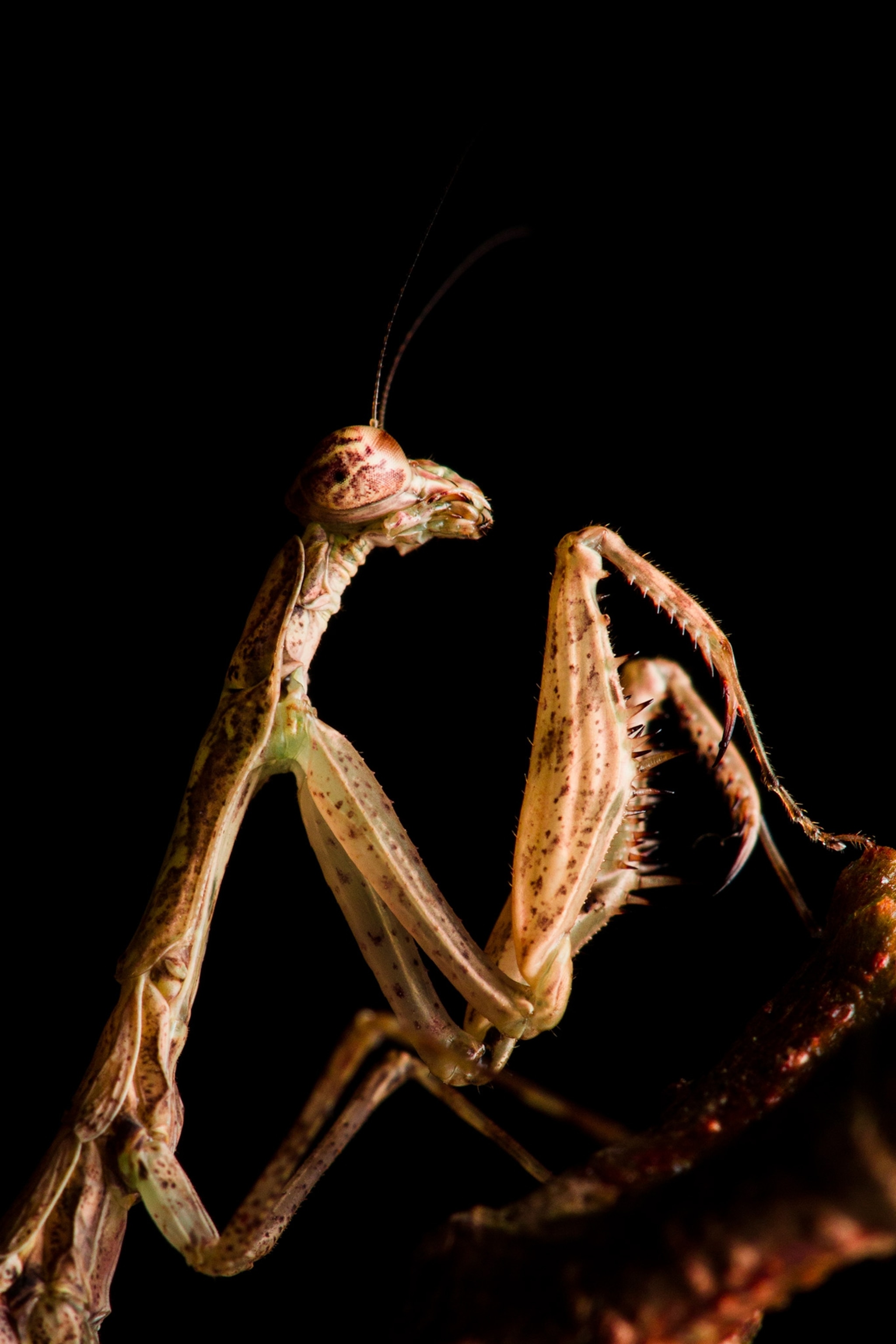
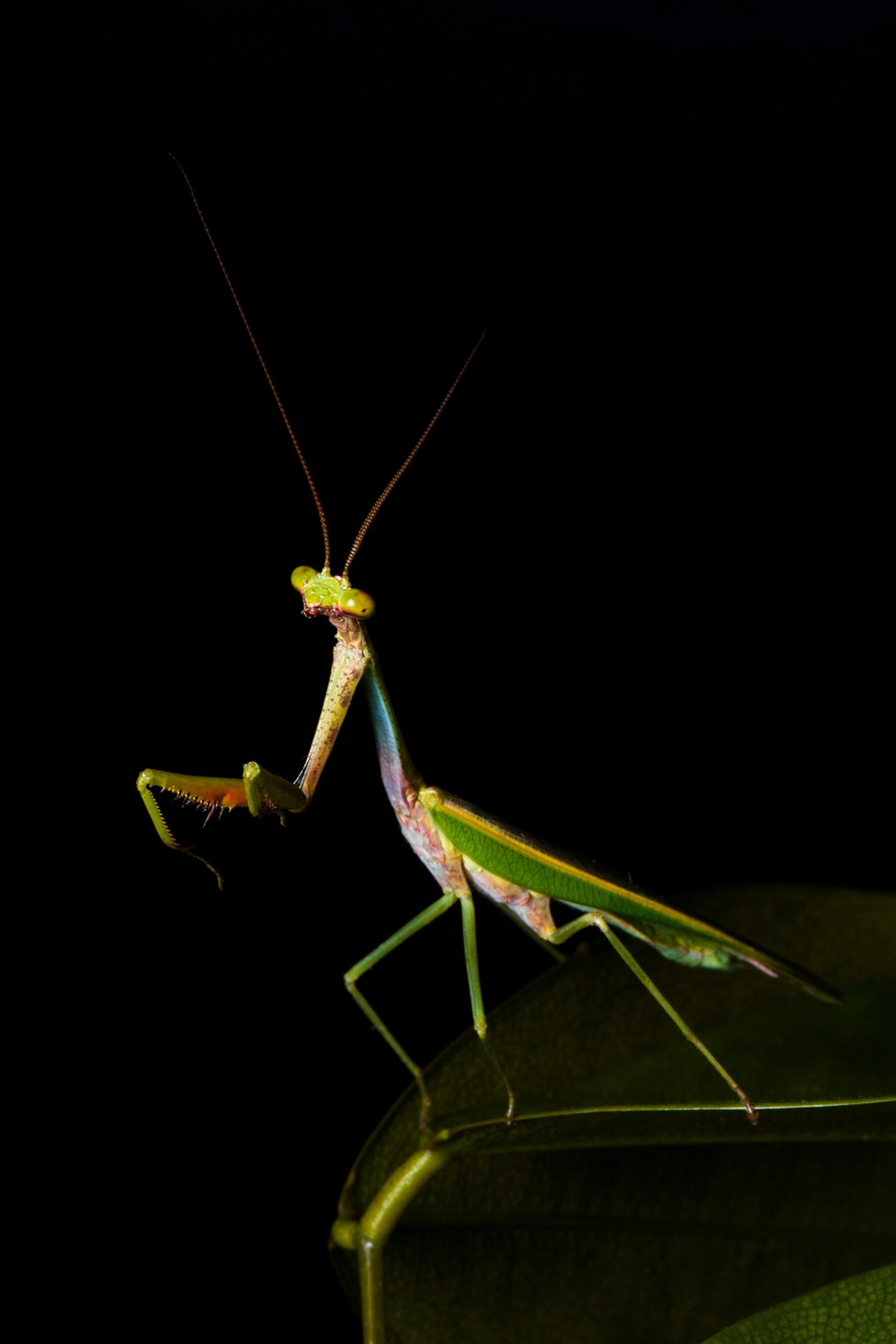
It’s still unclear exactly why unicorn mantises have such magnificent protuberances sprouting from their domes. The best guess is that they serve as a type of mimicry or camouflage. (See pictures of amazing insect camouflage.)
It seems likely they're “meant to break up the silhouette of the animals,” Lanna says, so for example the mantises head wouldn’t appear to a predator like an edible prey’s head—but some other (inedible) thing like a leaf bud. They are probably not used for jousting or making magic potions, unfortunately.
Indeed the praying mantises of the Atlantic Forest are, like their kin elsewhere, experts at blending in and hiding. To find them, Lanna and colleagues go through forests at night with flashlights, which provide a bright cone of light for zeroing in.
Rivera adds that mantises are supremely important, like other insects, for a functioning ecosystem—and are also very charismatic. Whether it’s due to their large eyes; their apparent poise and power; or their graceful, deadly limbs—they grab people’s attention.
“They open our eyes to the insect world,” Rivera says. “And they have a lot of things to say.”

